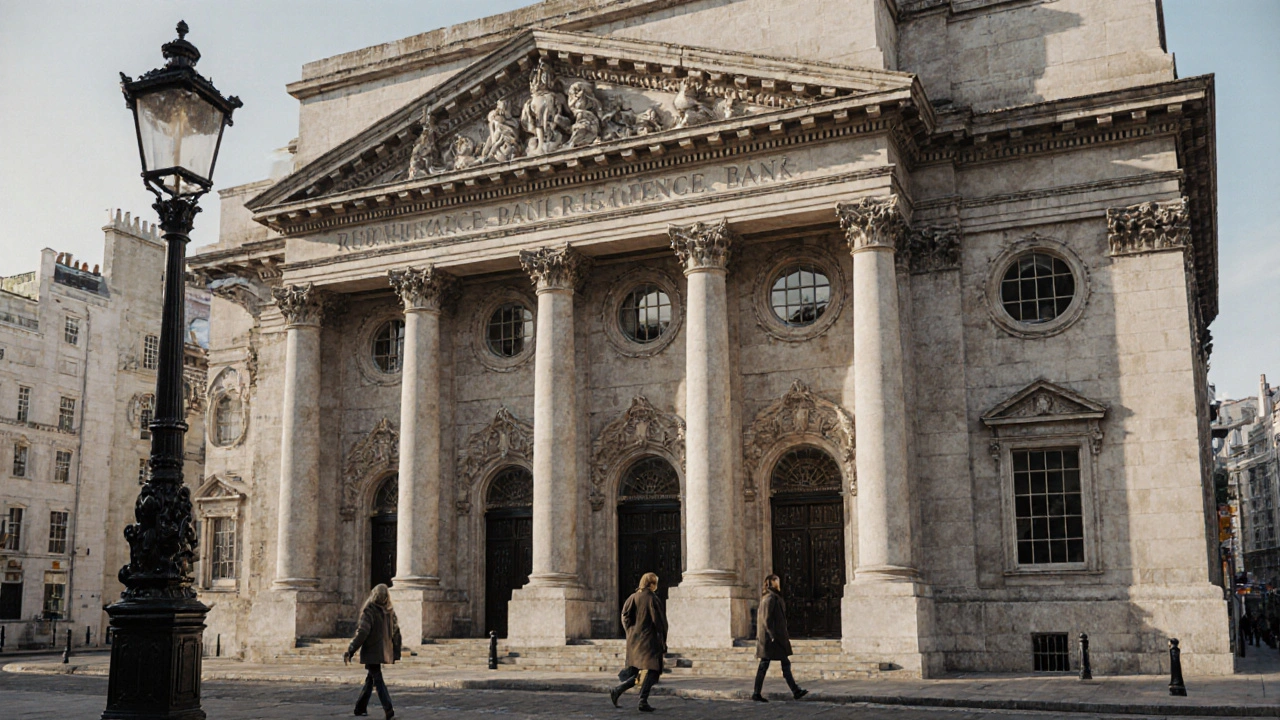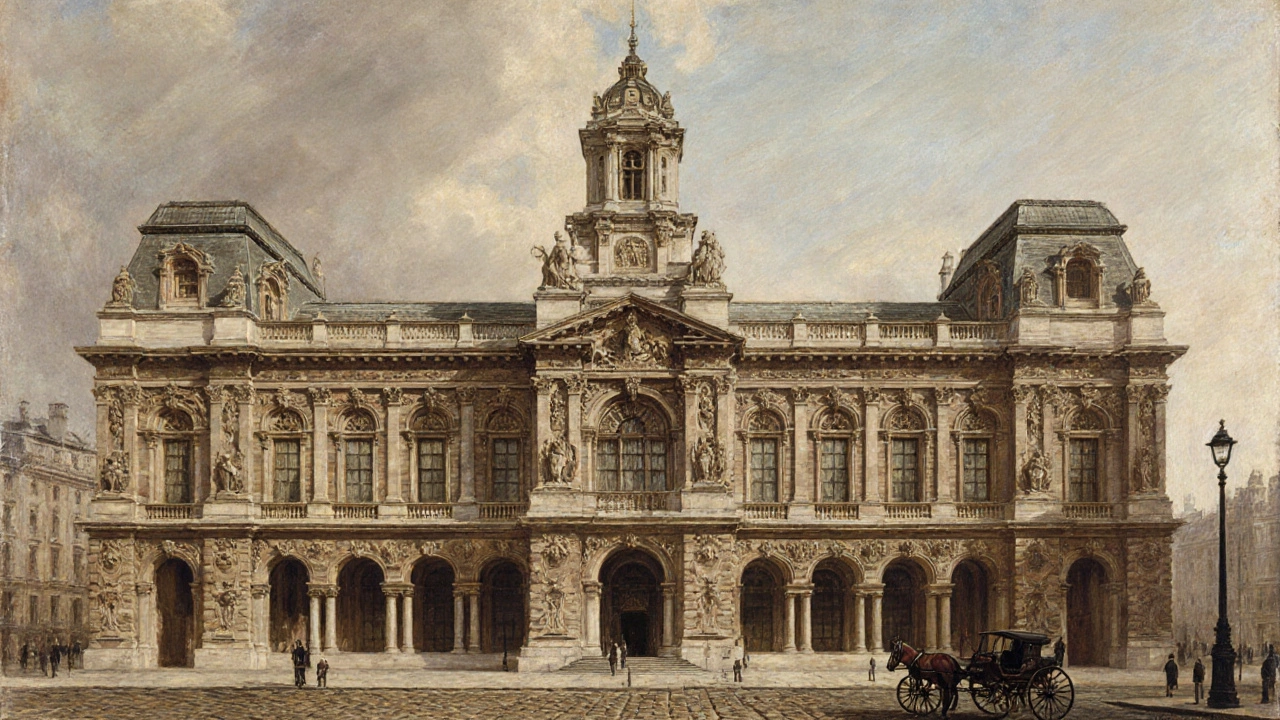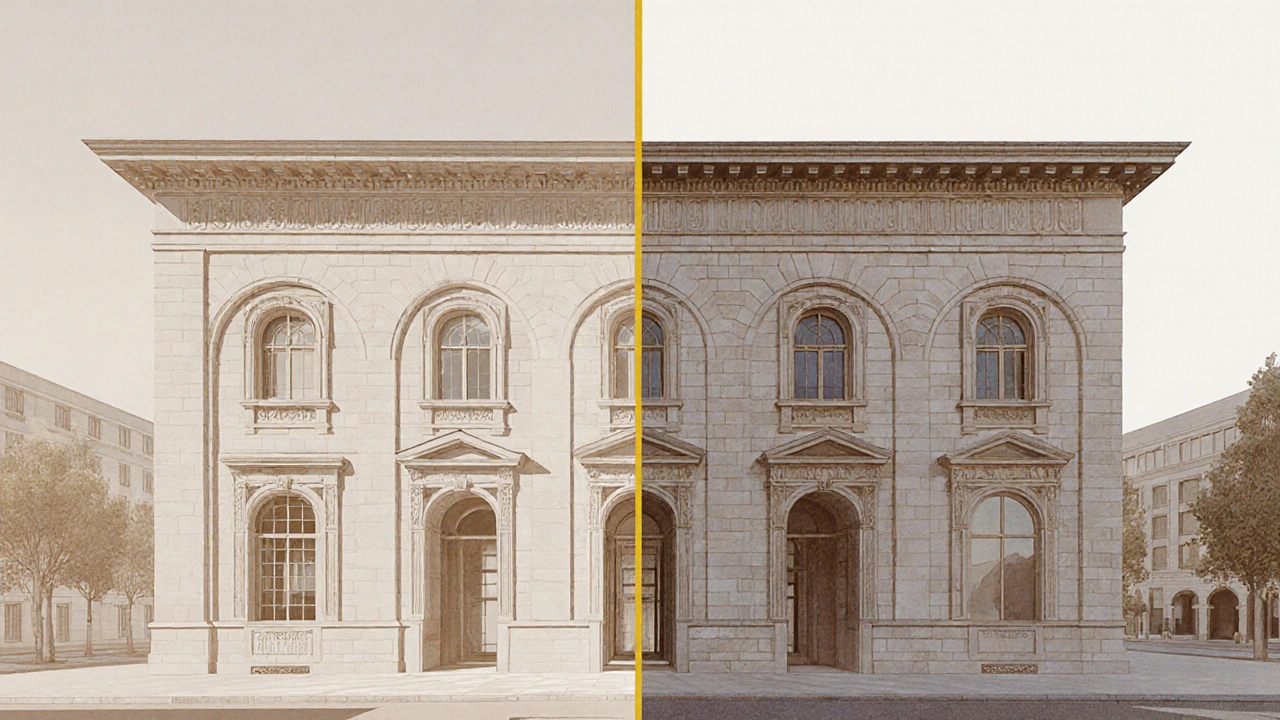Exploring the Grandeur of Renaissance Revival Architecture
 Nov, 15 2025
Nov, 15 2025
When you walk past a grand stone building with arched windows, heavy cornices, and balanced facades, you’re not just looking at an old house or bank-you’re standing in front of a revival. Not a copy, but a rebirth. Renaissance Revival architecture didn’t just borrow from the past; it reimagined it for a world changing fast-industrialization, empire-building, and a hunger for cultural legitimacy. Between 1840 and 1900, this style swept across Europe, North America, and beyond, turning civic buildings, mansions, and even train stations into monuments of classical order.
Where Did Renaissance Revival Come From?
The original Renaissance, between the 14th and 17th centuries in Italy, was a time when artists and architects looked back to ancient Rome and Greece for inspiration. They brought back symmetry, proportion, and the use of columns, domes, and pediments. But by the 1800s, those ideas had faded from daily life. Then came the 1840s. As nations sought to define their identities, architects turned again to the Renaissance-not because it was trendy, but because it felt solid, dignified, and timeless.
It wasn’t just about beauty. It was about power. Governments, banks, and wealthy families wanted buildings that screamed stability and sophistication. The Renaissance Revival offered that. Unlike Gothic Revival’s pointed arches and religious mysticism, Renaissance Revival was calm, rational, and civic-minded. It suited the rising middle class and the industrial elite who wanted to be seen as cultured, not just rich.
Key Features You Can Spot Today
If you’ve ever seen a building that looks like a Tuscan palace dropped into a city street, you’ve seen Renaissance Revival. Here’s what to look for:
- Symmetrical facades-windows and doors placed like mirror images on either side of a central axis
- Round arches over windows and doorways, often with stone surrounds called voussoirs
- Heavy cornices-thick, projecting moldings at the top of the building, sometimes decorated with dentils or modillions
- Quoins-large, squared stones at the corners that make the building look stronger and more monumental
- Classical details-columns, pilasters, pediments, and balustrades borrowed from ancient temples
- Red brick or stone exteriors, often with terra cotta ornamentation
One of the most recognizable forms is the palazzo style, named after Italian Renaissance townhouses. These buildings usually have three or four stories, a rusticated ground floor (rough-cut stone), and smoother finishes above. The symmetry is strict-no leaning, no asymmetrical balconies. Everything is in its place.
Where You’ll Find It Around the World
Renaissance Revival didn’t stay in Italy. It traveled. In the United States, you’ll find it in banks in Boston, government buildings in Washington D.C., and grand mansions in Newport, Rhode Island. The James B. Duke House on Fifth Avenue in New York-built in 1910-is a textbook example: rusticated stone, arched windows, and a heavy cornice that looks like it was lifted from Florence.
In the UK, the Victoria and Albert Museum in London, expanded in the 1860s, blends Renaissance details with Victorian energy. Its terracotta façade, arched loggias, and sculpted friezes are pure Renaissance Revival, but with a British twist.
Even in places like Australia and New Zealand, you’ll find it. The Old Government Buildings in Wellington, completed in 1876, is one of the largest wooden buildings in the Southern Hemisphere-and it’s built in the Italianate style of Renaissance Revival. Tall windows, deep eaves, and a central tower give it the feel of a Tuscan villa, even though it’s made of kauri pine.

Why It Was So Popular
Why did this style catch on so hard? For one, it was adaptable. Unlike Gothic Revival, which was tied to churches and cathedrals, Renaissance Revival worked for banks, schools, libraries, and even hotels. It was seen as modern-not because it used new materials, but because it used old ideas in new ways.
It also matched the rise of photography and mass printing. People could now see images of Italian palaces and Roman ruins in books and magazines. Architects like Charles Barry in Britain and Richard Morris Hunt in America studied these images closely and brought them home. They didn’t just copy-they interpreted. They added iron railings, gas lamps, and later, electric fixtures, blending the old with the new.
There was also a political angle. In newly unified countries like Italy and Germany, Renaissance Revival became a way to claim cultural heritage. In the U.S., it signaled that America wasn’t just a frontier nation-it could build like the great civilizations of Europe.
The Decline and Legacy
By the early 1900s, tastes shifted. The Arts and Crafts movement pushed for handcrafted simplicity. Modernism, with its clean lines and steel frames, made Renaissance Revival look heavy, old-fashioned, and even wasteful. After World War I, few new buildings were built in this style.
But it never disappeared. Many Renaissance Revival buildings were too solid to tear down. They became banks, museums, and universities. Today, they’re protected as historic landmarks. In cities like Chicago, Philadelphia, and Sydney, you can walk down streets lined with these buildings and feel the weight of history-not just in their stone, but in their purpose.
Modern architects still borrow from it. Look at the Apple Park Visitor Center in Cupertino. Its circular form, flat roof, and stone cladding echo Renaissance ideals of harmony and proportion. It’s not Renaissance Revival, but it’s clearly inspired by its spirit.

How to Recognize It in Your Own City
You don’t need to travel to Florence to see Renaissance Revival. Check your local courthouse, library, or old bank. Look for:
- Is the building symmetrical? If yes, that’s a strong clue.
- Are the windows rounded at the top, not square or pointed?
- Does the building have a heavy, overhanging roof with decorative trim?
- Are the corners made of large, squared stones?
- Is there a sense of balance-not just in shape, but in how the parts relate to each other?
If you answer yes to most of these, you’re likely looking at Renaissance Revival. It’s not flashy. It doesn’t shout. It commands attention through calm authority.
Why It Still Matters
In a world of glass towers and minimalist boxes, Renaissance Revival reminds us that architecture can carry meaning. These buildings weren’t just shelters-they were statements. They said: We value order. We respect history. We believe in lasting beauty.
Today, as cities struggle with uniformity and anonymity, these buildings stand out-not because they’re old, but because they were made with intention. They remind us that good design isn’t about trends. It’s about balance, proportion, and human scale.
Next time you pass one, take a second to look up. Notice how the light hits the cornice. How the arches frame the sky. That’s not just architecture. That’s a conversation with the past.
What’s the difference between Renaissance Revival and Gothic Revival architecture?
Renaissance Revival draws from classical Roman and Italian Renaissance design-think symmetry, round arches, and balanced proportions. Gothic Revival, on the other hand, is based on medieval cathedrals with pointed arches, flying buttresses, and vertical lines meant to draw the eye upward. Renaissance buildings feel grounded and calm; Gothic ones feel dramatic and spiritual.
Is Renaissance Revival the same as Italianate style?
Italianate is a subtype of Renaissance Revival, mostly used in residential and commercial buildings in the 19th century. It emphasizes tall windows, bracketed cornices, and sometimes a low-pitched roof or tower. While all Italianate buildings are Renaissance Revival, not all Renaissance Revival buildings are Italianate-some are more palazzo-style or heavily classical.
Why do so many old banks look like Renaissance palaces?
Banks in the 1800s wanted to look trustworthy and permanent. Renaissance architecture was associated with wealth, stability, and civic pride-qualities banks wanted to project. A building with stone walls, arched windows, and symmetrical design made customers feel their money was safe, not just in a vault, but in a legacy.
Can you mix Renaissance Revival with modern materials?
Absolutely. Many restorations use steel frames behind historic brick facades, or modern glass in place of original windows while keeping the overall symmetry and proportions. The key is preserving the rhythm and balance of the original design-not copying every detail, but honoring its spirit.
Are there any famous architects known for Renaissance Revival?
Yes. Richard Morris Hunt in the U.S. designed the Biltmore Estate and the Metropolitan Museum of Art’s facade. Charles Barry in the UK worked on the Houses of Parliament and the Victoria and Albert Museum. In France, Hector Horeau designed many public buildings in the style. These architects didn’t just copy-they adapted the Renaissance language to modern needs.